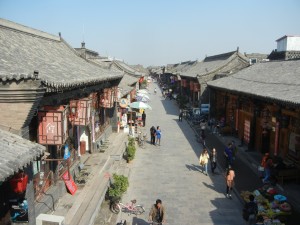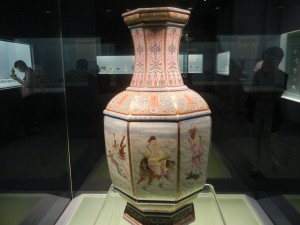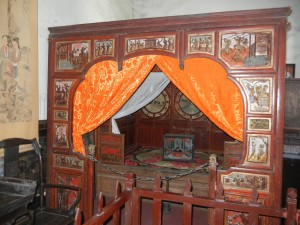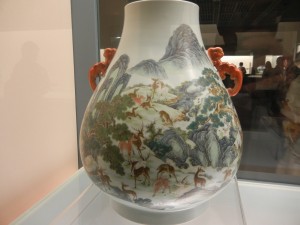Emperor Kangxi did his best to harmonize all of China, but it was becoming more complex than even he imagined.
Many teachers and writers have seen the Qing dynasty as trapped in 3,000 years of cobwebs, but it was a lot more dynamic than most people realize.
1. Commerce increased greatly. The government allowed more international trade in the 1680’s. Many people traveled outside China and established communities and commercial networks all over Southeast Asia. The famed Straits Chinese of Singapore and Malaysia have roots in this movement.
2. Cities grew in the lower Yangzi basin, including Shanghai.
3. China’s population increased, and the Qing improved administration and communication to make China more prosperous than it had ever been.
4. More wealthy people commissioned more art. Ceramics reached new levels of refinement.
5. The literary market grew in the late Ming and early Qing dynasties. More people were reading and writing things outside of the Confucian canon.
6. China’s greatest novel, The Dream of the Red Chamber, was published in 1792, and it reached new levels of psychological depth and multileveled complexity. On the surface, it’s about a large declining family that was once prosperous, but it’s also a Buddhist reflection on the impermanence of existence.
7. Technology was being imported from Jesuits. The emperor was the Master of the Calendar, and thus had to keep track of the growing season. He also had to manage religious festivals. Chinese learned Kepler’s system of astronomy, and the court collected clocks.
8. As more art was commissioned, more varieties of painting grew. Many artists experimented with three-dimensional painting that the West pioneered.
Not everyone connected with 3-dimensional perspective. Chinese landscape painting was already a 1,000 year old tradition, and it’s more based on flows of yin and yang energies throughout the whole scene, rather than analyzing details of every object. The main goal of painting was to show energy. One artist wrote that 3-dimensional works are only maps, not paintings.
Other artists experimented with Chinese idioms. Some of Shitao’s works are more visceral than the stately old landscapes. Painting in the Qing Dynasty was very diverse.
9. Some thinkers were stressing objective analysis rather than Confucian veneratin of tradition. Ku Yen-Wu criticized the late Ming governments decadence. Yen Yuan wrote that concrete realities and practical applications matter more than theory.
10. More groups of people were under Chinese sovereignty. More minority groups were becoming conscious of themselves–a problem that China’s government still hasn’t solved.
But these currents didn’t coalesce into a single movement–they didn’t spark things that happened in the West, like
1. The Protestant Revolution.
2. Modern business’s network of modern banking, insurance, the stock market and laws of private property.
3. The scientific revolution. Chinese had learned of Kepler’s new cosmology, but they didn’t learn of Newton’s until the late 19th century. And Ku Yen-Wu and Yen Yuan applied objectivity to the study of history. It didn’t become a general value that was applied to all fields.
4. Revolutions in agriculture that happened in Holland and England in the 16th and 17th centuries. These little nations were having trouble feeding themselves.
5. The modern self that’s independent from one’s network of family.
6. The Industrial Revolution.
New and old ideas were in tension. Qing China was not entirely hide-bound, but China’s ancient heritage was too rich and big to be completely jetisoned. The new ideas helped create some of the greatest art in the world. But China was about to suffer one of the worst string of catastrophes that befell any nation.





Comments on this entry are closed.